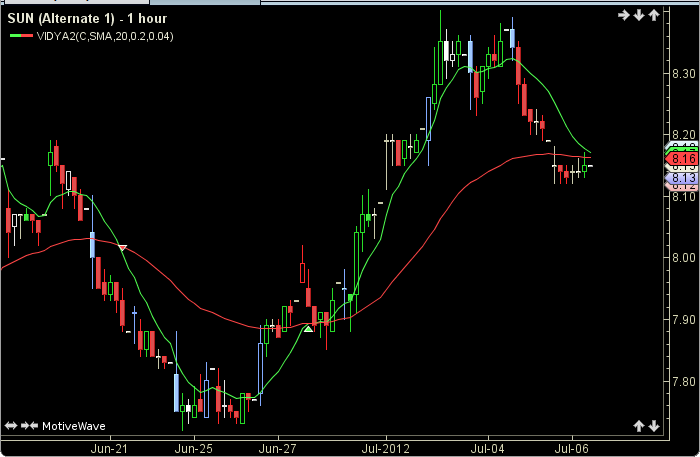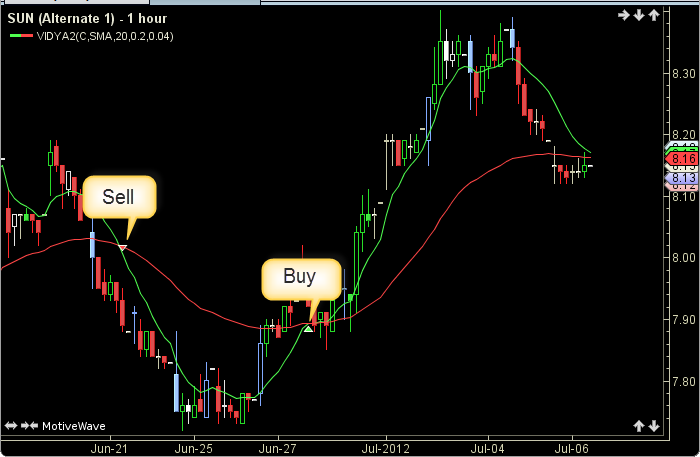VIDYA2 Indicator
VIDYA2 Indicator by Chande and Kroll are types of Adaptive Moving Averages that use Standard Deviation and feedback in their calculation. Two paths are plotted with different alpha values. The user may change the input (close), period (20) and alphas (.2,.04). This indicator’s definition is further expressed in the condensed code given in the calculation below.

How To Trade Using VIDYA2 Indicator
Trading signals are generated when VIDYA1 and VIDYA2 cross. If VIDYA1 crosses above (upward movement) a buy signal is generated. Conversely, if VIDYA1 crosses below (downward movement) a sell signal is given.

How To Access in MotiveWave
Go to the top menu, choose Study>Tushar Chande>VIDYA2 Indicator
or go to the top menu, choose Add Study, start typing in this study name until you see it appear in the list, click on the study name, click OK.
Important Disclaimer: The information provided on this page is strictly for informational purposes and is not to be construed as advice or solicitation to buy or sell any security. Please see our Risk Disclosure and Performance Disclaimer Statement.
Calculation
//input = user defined, default is close
//period = user defined, default is 20
//alpha1 = user defined, default is .2
//alpha2 = user defined, default is .04
//prev = previous, index = current bar number
//std = stdDev = standard deviation
stdDev = std(index, period, input); avStdDev = ma(method, index, period, stdDev); prevVidya1 = isNull(price, vidya1[index-1]); //feedback prevVidya2 = isNull(price, vidya2[index-1]); //feedback ratio = stdDev/avStdDev; Plot1: vidya1 = (alpha1 * ratio * price) + ((1-(alpha1*ratio)) * prevVidya1); Plot2: vidya2 = (alpha2 * ratio * price) + ((1-(alpha2*ratio)) * prevVidya2); //Signals buy = crossedAbove(VIDYA1, VIDYA2); sell = crossedBelow(VIDYA1, VIDYA2);
